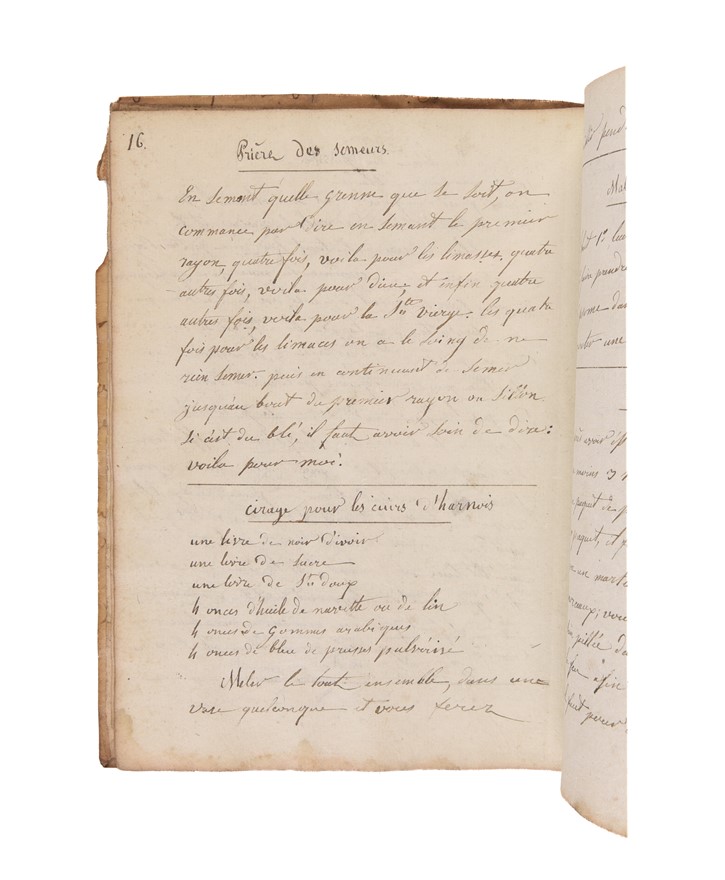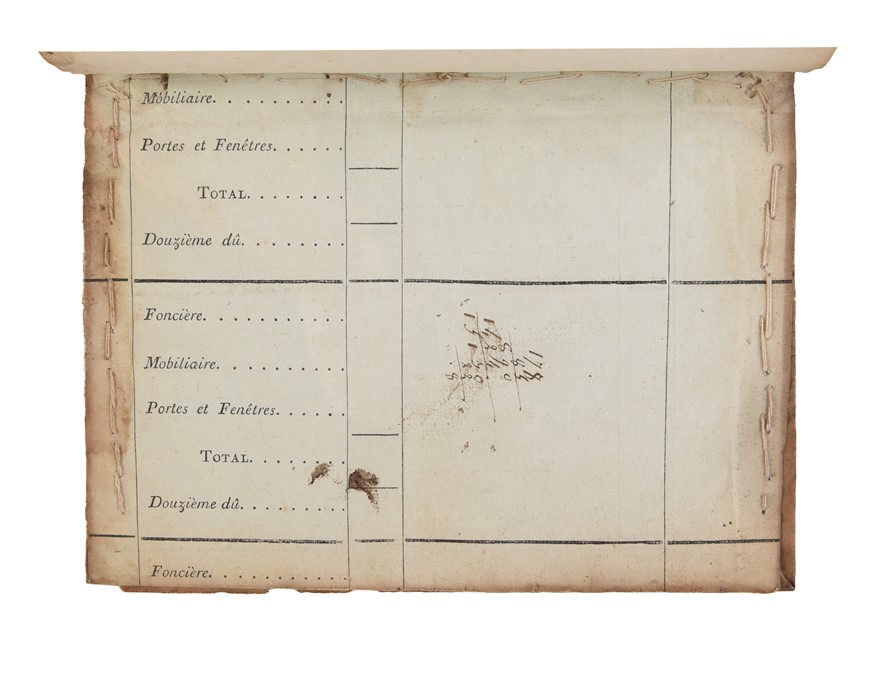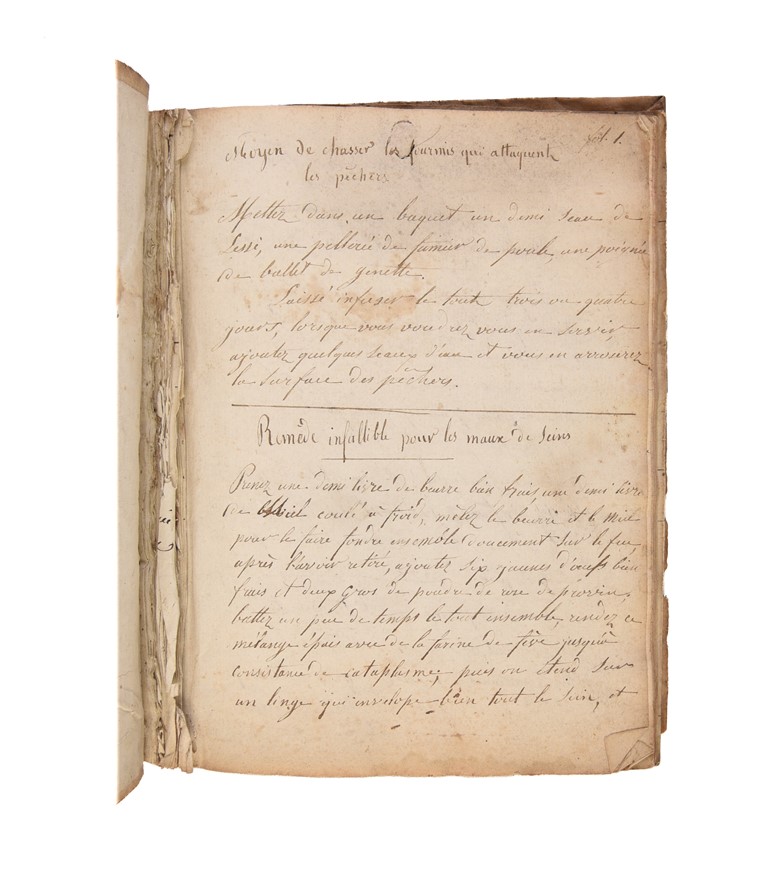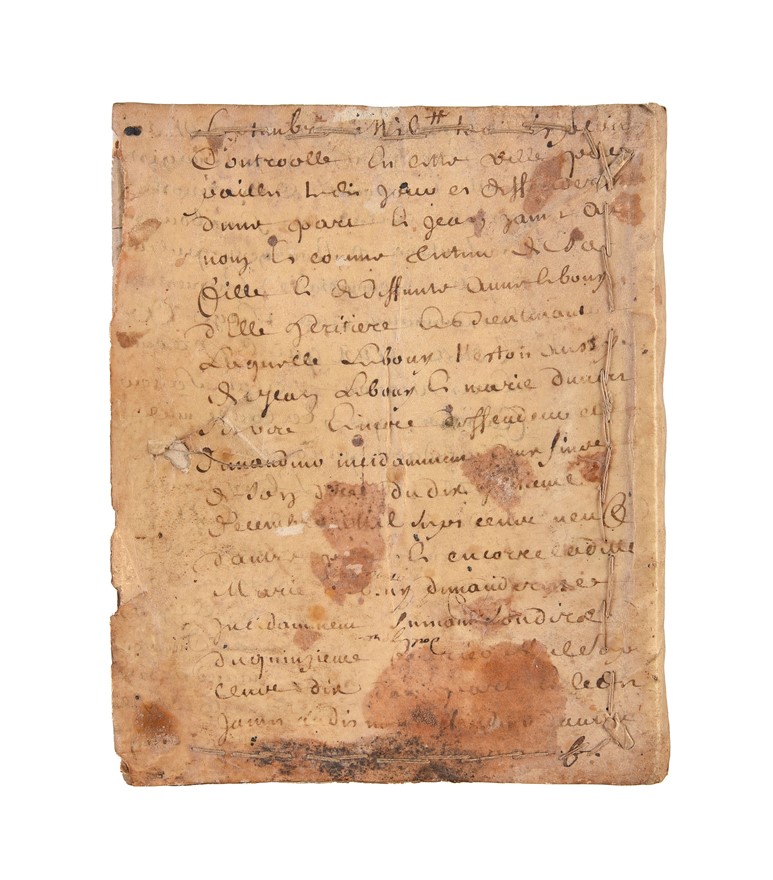Medical, veterinary and agricultural manuscript containing various conditions and remedies.
MEDICAL MANUSCRIPT (c.1800)
£1750.00
Please contact us in advance if you would like to view this book at our Curzon Street shop.
MEDICAL & VETERINARY MANUSCRIPT, WITH CONVENIENT, HAND-STITCHED POCKET
MANUSCRIPT ON PAPER. 4to (205 x 165mm). [25]ff., numbered pp.1-25, 27-30, index of contents of numbered pages at rear, leaves removed by eighteenth-century owner/writer, stubs remaining. Binding of waste parchment, with folded scrap of printed waste paper crudely stitched on three sides to inside lower cover (vellum discoloured and stained, holes in upper and lower covers for ties).
A slim, manuscript volume bound in a waste fragment of contemporary parchment, containing over thirty recipes and treatments for human and animal illnesses, and the treatment and management of crops, all carefully indexed in a neat hand at the rear. The binding parchment is a single sheet - very likely a bifolium - with manuscript in French, taken from a legal document. Repeated mention of a 'Liboury', 'la ditte marie' and 'sa fille', and 'heritiere' would indicate that it's a will.
The recipes here cover a range of treatments for a broad array of maladies, from breast pain, inflammation and flu in humans, to foot rot in sheep, lameness in horned animals, blood in oxen's urine, and so on. Occasionally the same condition in animals and humans appears side by side; beneath 'recette infallible pour delivrer une vache', delivering a calf, is written a recipe for a treatment to ease 'une femme qui si trouverait dans le même cas', a woman in the same situation (p.2). Though veterinary medicine did emerge as a separate discipline in Europe over the course of the eighteenth century, it was still very much ’a branch of human medicine, grounded in knowledge of humans and partially populated by surgeons’ (Woods, 495); cures for maladies in people were applied to animals and in some cases, vice versa.
Also noted are remedies for crops, and insects - means of driving away insects that attack fruit trees, the method of fumigating a beehive, the conservation of trees and protecting wheat crops; as well as recipes for mead, vinegar, and polish for harness leathers. One particularly appealing entry is the 'Priére des Semeurs' on p.16, the prayer for sowers, which instructs that when sowing the first row one must say four times, 'that's for the slugs', four more times, 'that's for God', and four more times, 'that's for the Holy Virgin', ... and finally, if wheat appears, 'that's for me!'
This volume has been thoroughly adapted for use by its eighteenth-century - evidently rural - owner, in a way that indicates repeated use over a long period of time. They have haphazardly cut out all the used pages before starting their own notes, so as to render this volume a 'fresh' blank book for their treatments; this is confirmed by the index at the rear which records only the(ir) contents present in the 'new', abbreviated book. More interestingly, they have also stitched part of a blank pro-forma document - folded, presumably to make it sturdier - to the inside of the lower cover on three sides to create a pocket space. The sheet is printed in a tabulated format; visible in the left-hand column are 'foncière', land; 'mobiliaire', furniture; 'portes et fenêtres', doors and windows; 'Total', and 'Douzième dû', twelfth due. While we have not been able to track down an image of a full sheet, this looks very much like a tax form; the French Revolutionary government introduced a tax on windows and doors in 1798.
A. Woods, ‘From one medicine to two: the evolving relationship between human and animal medicine in England, 1791-1845’, Bulletin of the History of Medicine, 91 (3). pp. 494-523. G. Barroux, ‘Animal Health and the emergence of Veterinary Medicine in the Eighteenth Century’, Revue d’Histoire des Sciences 64.2 (2011), 349-76.
Stock Code: 251776









